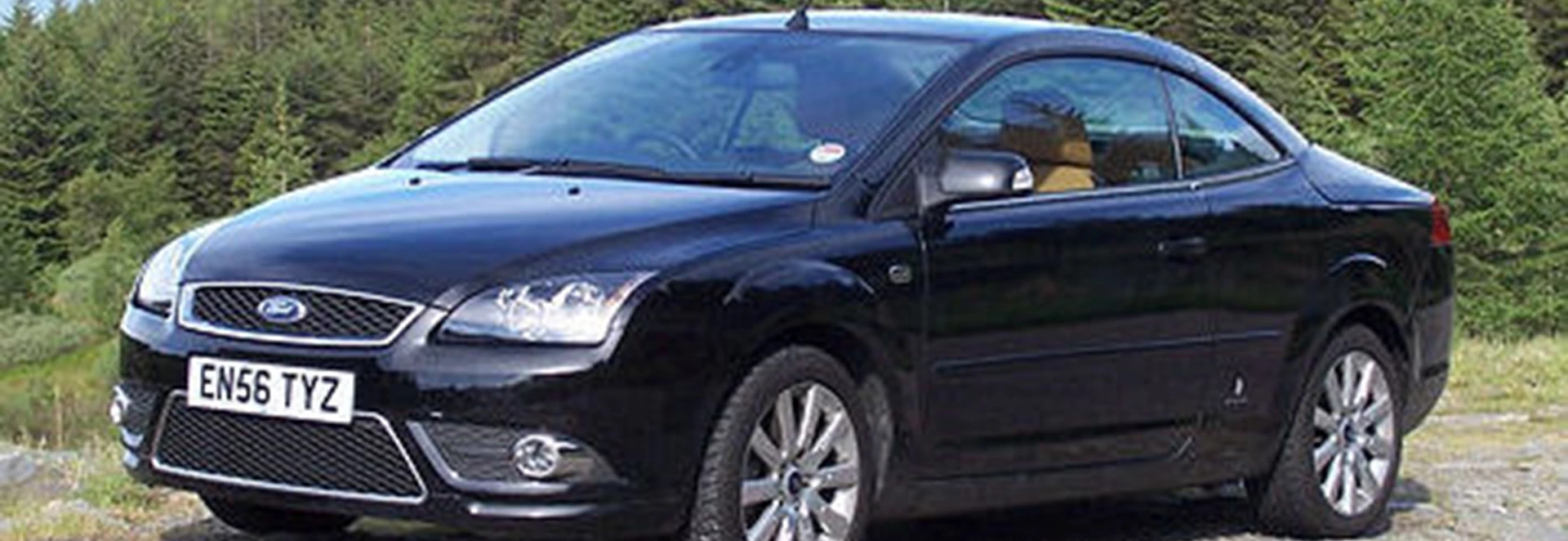One thing I'm always keen to encourage on this magazine is difference of opinion, and I'm glad to say we have one of them here. There are contributors who reckon that the Focus Coupé-Cabriolet looks better with the roof up than the roof down. I honour their opinions. I fiercely defend their right to express them. But I don't believe a word of it.The Coupé-Cabriolet was first revealed at the 2004 Paris Show under the guise of the Vignale concept. (Small aside: I wish they'd kept that name - used in honour of Italian coachbuilder Alfredo Vignale - rather than switch to the more prosaic Coupé-Cabriolet. I feel a little magic has been lost. End of small aside.)At the time of the Paris Show I felt that the Vignale was at heart an open car, and that it just wasn't as attractive with the roof up. The Coupé-Cabriolet looks almost exactly the same (more or less proving that the concept was far closer to production readiness than Ford felt able to say), and I still believe it's much smarter when it goes al fresco.The key to this is the appearance of the boot. Going somewhat against the class trend, Ford has provided the car with a truly massive luggage compartment. Even with the roof tucked in there, it has 248 litres of available space, while the full capacity is 534 litres. That's a heck of a lot, but it also means that the CC looks distinctly corn-fed from the rear when the roof is up.With the roof down, though, something magical happens. All the lines start to make sense, and the CC becomes elegant, and perhaps something approaching svelte too. If I were as fashionable as I sometimes like to think I am, I would have the roof down at every opportunity.Back in the real world, I'm not a huge fan of open-topped motoring, so it stretches credibility to suggest that I might buy one. Still, I can see where the CC scores and where it doesn't. That large boot makes it unusually practical for a coupé-convertible, though I must say this isn't matched by the amount of space available for rear passengers.Ford has been describing this car right from the start as a "true four-seater", and it does unquestionably have four seats. I counted them and, yes, there are four all right. However, this is not the same as saying that the CC will accommodate four adults, or even four human beings at any stage of their development - certainly not if I'm one of them. With the driver's seat in the place that suits me, you're not going to be able to fit anyone behind it.But this is par for the coupé-convertible course. All manufacturers of these cars say they are suitable for four people, and they never are.Another thing common to all coupé-convertibles is that they lose a little structural integrity when the roof is folded ("true" convertibles don't because their soft tops don't help the structure even when they are in place). The same applies to the Focus, but there's really very little extra wobble, and you would have to be something of a car anorak - guilty, m'lud - to notice much difference. Coupé-convertibles are also heavier than their saloon or hatchback equivalents because of all the extra mechanism required to fold and unfold the roof in the standard 20-odd seconds. This has an obvious effect on the performance. The car tested here uses the two-litre petrol engine (there's also a much less powerful 1.6, plus a diesel which Ford reckons will have very few takers) and although it produces a respectable 143bhp, quite a lot of this is required to shifting the car's bulk at all, rather than to shifting it at any great speed.The CC has come in for some criticism about this, but while it's not exactly a tarmac-shredder I'm really not too fussed by it. That's perhaps because there's a consolation in the fact that it handles really rather well. There's nothing outstanding about the driving experience, but I took the test car on a wide variety of roads and found that it behaved in a well-controlled, almost nimble manner on every one of them.It was also generously equipped, on account of being in the range-topping CC3 trim level. Standard equipment includes air-conditioning and electric doors and mirrors (as on the CC-1), 17" alloy wheels, front foglights, a leather steering wheel and sports suspension (as on the CC2) plus, uniquely, cruise control, heated front seats, a 6-CD autochanger, front and rear mats and automatic lights and wipers.All that, along with the petrol engine, is available for a list price of just under £19,000. The test car was worth a little over £20,000 thanks to the addition of two optional extras. The simpler of these is a Bluetooth hands-free mobile phone kit with voice control for £250.The other is a Luxury Pack, consisting of full leather trim (the interior is only part-leather in standard form) plus Dual-zone Electronic Automatic Temperature Control, or DEATC, which is several steps above the usual manual air-conditioning.What the test car didn't have was a windbreak, which adds another £200 to the price. Colleagues assure me that it's very effective, though even without it the swirling of air through the open cockpit isn't too offensive.That's in convertible terms. Actually, it offended me quite seriously, but as someone who prefers a car's roof to be above my head rather than behind my shoulder, I would say that, wouldn't I? Engine 1999 cc, 4 cylinders Power 145 bhp @6000 rpm Torque 136 ib/ft @4500 rpm Transmission 5 speed manual Fuel/CO2 37.6 mpg / 179 g/km Acceleration 0-62mph: 10.3sec Top speed 129 mph Price From £18556.00 approx Release date 01/10/2006

Our Rating



